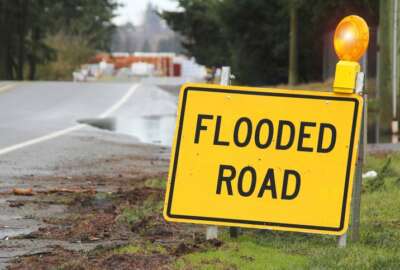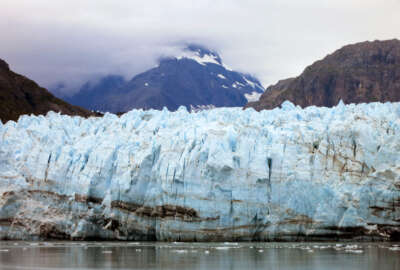
More than a thousand military sites vulnerable to climate change
A new study points out where the military might be vulnerable to climate change.
More than a thousand military installations may be vulnerable to disasters and weather conditions caused by climate change.
A new study from the Defense Department finds drought, high winds, flooding and extreme temperatures have caused problems for bases in the past and could pose risks to those bases in the future if climate change continues its effects on the United States.
The study, delivered to Congress in January, states about 22 percent of military sites have experienced droughts in the past. A similar percentage experienced high winds and non-storm surge related flooding.
About 10 percent of sites said extreme temperatures were an issue and about 6 percent of sites reported wildfires and flooding due to storms, the report stated.
About 50 percent of the 3,500 sites reported they had no effects to their installations from climate issues.
“DoD looks at climate through the lens of its mission. From that perspective, changes in climate affect national security in several ways. Changes in climate can potentially shape the environment in which we operate and the missions we are required to do,” the study stated.
The study is considered the first step in an on-going process to manage risks associated with climate and DoD missions, installations and ranges.
Not surprisingly, the Navy saw the highest percentage of its sites hit by disasters considering their vicinity to coast lines. Seventy-three percent of Navy sites reported they felt the effects of natural disasters. The most prevalent factor was wind, followed by non-storm surge flooding.
About 300 Navy sites surveyed are located about a mile from the coastline; 45 percent of those said they experienced flooding in the past.
The military has taken climate change very seriously in recent years.
Military officials in charge of Defense Department and services installations told Congress last June about the threats climate change poses to buildings and how the military is trying to mitigate those threats.
The Defense Department is revising its unified facilities code to adjust to climate change issues.
In addition, the Navy is writing into its policies and construction code that all new buildings take into account the possibility of sea level rise, said Deputy Chief of Naval Operations for Fleet Readiness and Logistics Vice. Adm. Dixon Smith during the June 6 hearing.
“We are taking sea level rise into consideration in our projects. We started this a few years ago as we realized it is changing. So now whenever we design any project that’s within the 100 year flood plain we look at it and analyze ‘Do we need to make adjustments to a standard project to accommodate for [sea level rise],’ said Smith said.
Smith said the Navy’s fueling depot on Craney Island in Norfolk, Virginia was built 10 feet higher to account for climate change effects.
“Cyber buildings being built over at the Naval Academy, HVAC systems, utility systems are not going on the ground floor. They’re all safe from flooding. In that building we’ve designed flood barriers on the first floor,” Smith said.
A provision regarding climate change even made it into the 2018 defense authorization bill.
The law explicitly stated that climate change is a direct threat to the national security of the United States.
It requires the defense secretary to make a list of the 10 military installations most threatened by climate change and to explain how threats to those installations can be mitigated.
The provision also requires the defense secretary to address issues combatant commanders will face over the next 20 years due to climate change.
Rep. Jim Langevin (D-R.I.), who authored the provision, said he is worried about some of the installations in Rhode Island.
“We have a National Guard base that is right on the coast and although we haven’t experienced any significant, mission-critical effects of climate change yet, it is a concern that we have. You can see in time down the road, as ocean waters rise, because the waters are warming, that it very well will have an impact on that base and for other areas of Rhode Island where we are already experiencing significant problems from storm surge and erosion and other effects of significant storms,” Langevin said.
Copyright © 2025 Federal News Network. All rights reserved. This website is not intended for users located within the European Economic Area.
Scott Maucione is a defense reporter for Federal News Network and reports on human capital, workforce and the Defense Department at-large.
Follow @smaucioneWFED





